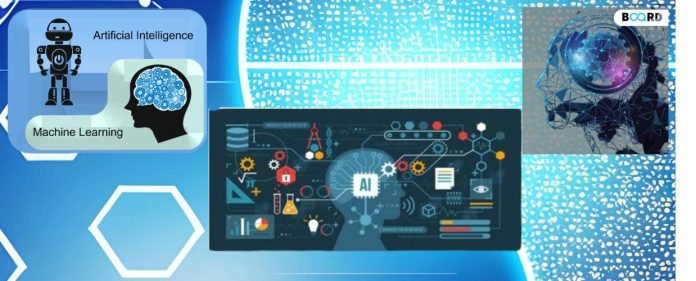In today’s digital landscape, the integration of artificial intelligence (AI) and machine learning (ML) has become instrumental in catalyzing digital transformation across industries. The convergence of data proliferation, advanced algorithms, and computing power has opened unprecedented opportunities for businesses to optimize operations, enhance customer experiences, and revolutionize decision-making.
This article drives into the pivotal role of AI and machine learning in propelling digital transformation, exploring their benefits, challenges, and profound impact on reshaping the business landscape.
AI and Machine Learning Engines of Digital Transformation
Artificial intelligence and machine learning, once confined to the realms of science fiction, have emerged as the engines driving transformative change in the digital age. These technologies empower organizations to harness the vast amounts of data at their disposal, extract meaningful insights, and make predictions that enable informed strategic decisions.
The Benefits of AI and Machine Learning in Digital Transformation
The vital role of AI and machine learning in digital transformation transcends technological advancements, offering strategic advantages that redefine the way businesses operate and interact with their environment.
Data-Driven Decision-Making
AI and machine learning empower businesses to extract actionable insights from massive datasets. Algorithms analyze patterns and trends, uncovering hidden relationships that human analysts might overlook. This data-driven decision-making approach enhances accuracy and enables organizations to make informed choices with a higher probability of success.
Personalized Customer Experiences
Through AI and machine learning, organizations can create highly personalized customer experiences. These technologies analyze customer behavior, preferences, and interactions to tailor products, services, and marketing strategies. This level of personalization fosters customer loyalty and engagement, propelling businesses ahead of competitors.
Predictive Analytics
AI and machine learning models excel at predictive analytics, forecasting future trends based on historical data. This capability enables organizations to anticipate market changes, customer demands, and supply chain fluctuations. By proactively adjusting strategies, businesses can optimize their operations and capitalize on emerging opportunities.
Process Optimization
AI-driven automation streamlines business processes, reducing manual efforts and errors. Robotic process automation (RPA) and AI-powered bots can handle repetitive tasks, enabling employees to focus on higher-value activities. This raises efficiency, reduces operational costs, and develops resource allocation.
Innovative Product Development
AI and machine learning fuel innovation by automating new products and services’ ideation, design, and testing. These technologies simulate scenarios, analyze outcomes, and recommend improvements, speeding up the product development lifecycle and enabling the introduction of cutting-edge offerings.
Challenges and Considerations
Despite their transformative potential, integrating AI and machine learning into digital transformation strategies comes with challenges.
Data Quality and Availability
AI and machine learning algorithms rely heavily on data quality and quantity. Organizations must ensure their data is accurate, relevant, and representative of the problem they aim to solve. Data silos and inconsistencies can hinder the effectiveness of AI applications.
Talent Gap
The demand for AI and machine learning experts often outpaces the supply. Organizations must invest in talent acquisition, training, and retention to build capable teams capable of developing, deploying, and maintaining AI-driven solutions.
Ethical and Regulatory Concerns
Using AI raises ethical dilemmas, such as algorithm biases and potential job displacement. Additionally, complying with data privacy regulations, such as GDPR and CCPA, while utilizing AI-powered solutions requires careful consideration.
Interpretable Models
Complex AI models can be challenging to interpret, making understanding how they arrive at certain decisions difficult. Explainable AI (XAI) is an emerging sector that aims to address this concern, ensuring transparency and accountability in AI-driven processes.
Driving Digital Transformation with AI and Machine Learning
To effectively harness the power of AI and machine learning for digital transformation, businesses should adopt a strategic approach.
Business Problem-Centric Approach
Start by identifying specific business problems that AI and machine learning can address. Focus on tangible outcomes, such as optimizing supply chains, improving customer satisfaction, or automating routine tasks. This ensures alignment between technology and business goals.
Data Strategy
Develop a comprehensive data strategy that encompasses data collection, storage, cleaning, and integration. High-quality data fuels accurate AI and machine learning models, enhancing their performance and reliability.
Cross-Functional Collaboration
Digital transformation with AI requires collaboration across departments. Cross-functional teams, including data scientists, domain experts, and IT professionals, should work together to define requirements, develop models, and deploy solutions.
Continuous Learning
AI and machine learning technologies are evolving rapidly. Encourage a culture of continuous learning and experimentation within the organization. Stay updated on the latest advancements and explore how they can be applied to enhance existing processes.
Conclusion
AI and machine learning are reshaping the digital transformation landscape, enabling organizations to unlock new efficiency, innovation, and competitiveness levels. By leveraging data-driven insights, personalizing customer experiences, and optimizing processes, businesses can navigate the challenges of the digital age while capitalizing on emerging opportunities.
While challenges like data quality and talent shortage persist, the transformative potential of AI and machine learning remains undeniable. With a strategic approach and a commitment to innovation, organizations can harness these technologies to drive meaningful digital transformation and thrive in an ever-evolving digital landscape.



